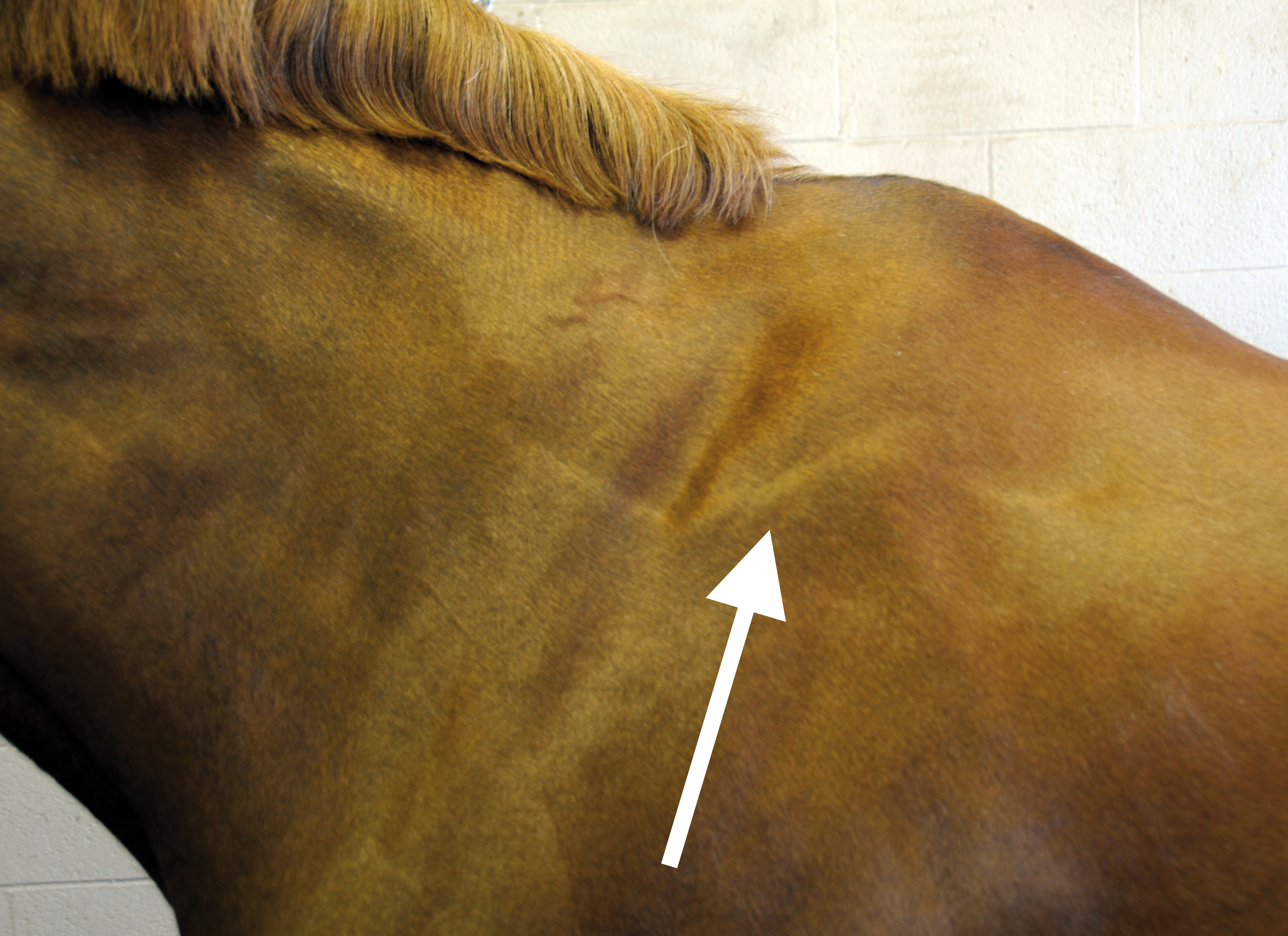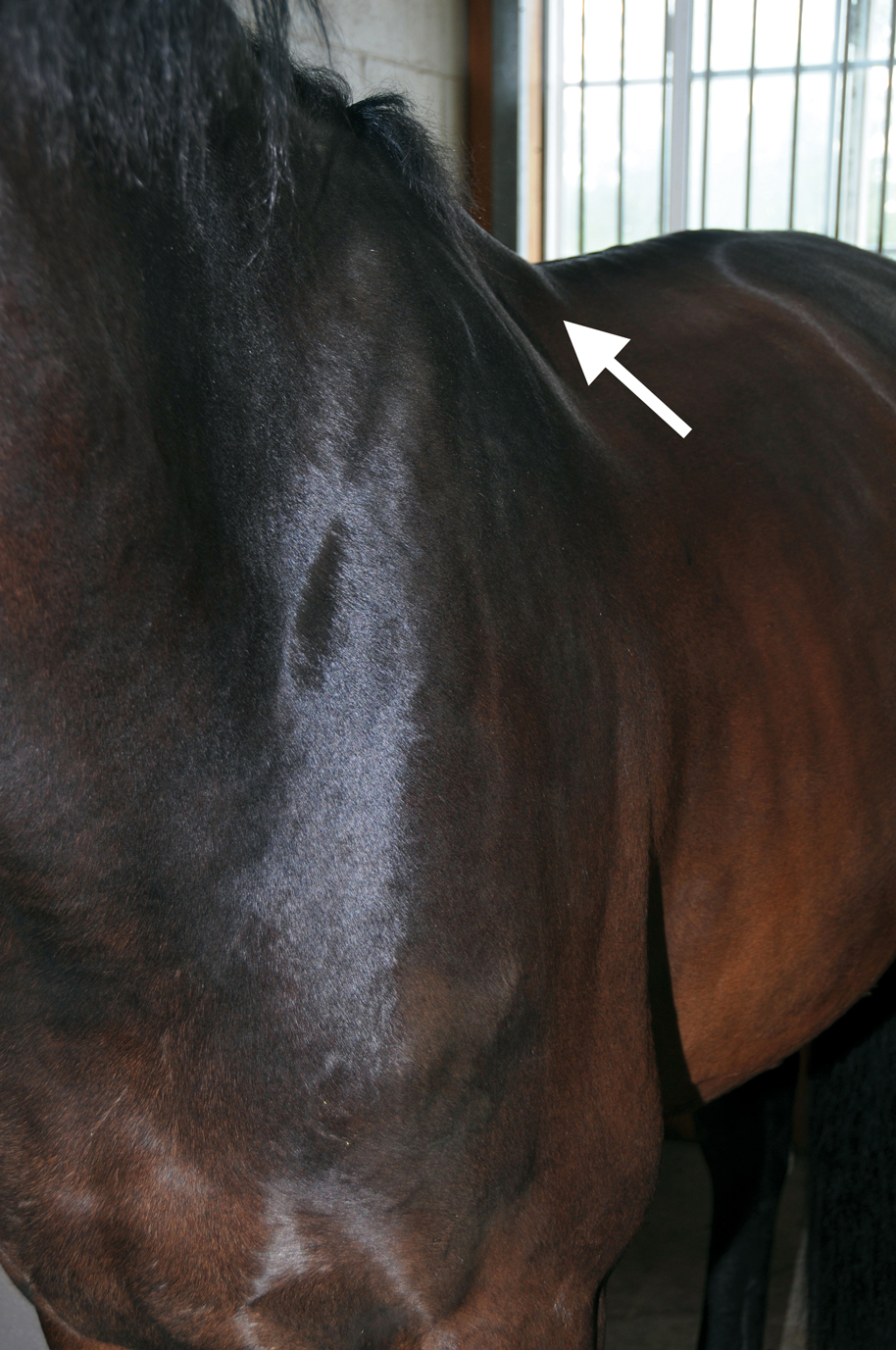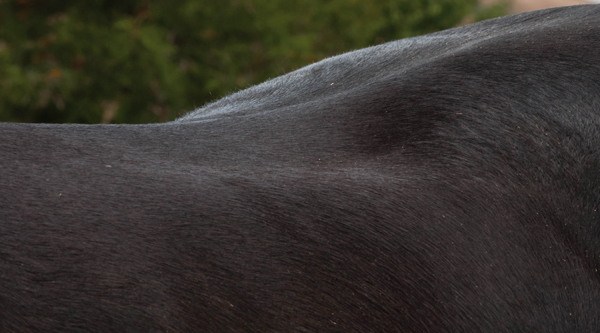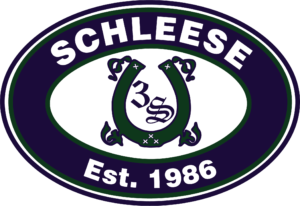Muscles Atrophy and Muscle Definition
I often come across clients who complain that their saddle has caused muscle atrophy. I think there is some misunderstanding of what exactly muscle atrophy is and how is it different from good muscle definition.
When a muscle has been trained for more than it would have normally developed naturally, and then not used for a while, it will naturally ‘atrophy’ back to its shape as nature would have determined it. It takes four times longer to develop a muscle than it does to lose muscle, which is why illness resulting in bed rest can have such a drastic effect on your leg muscles when you start to move around again.

Muscle atrophy also occurs when an unbalanced saddle puts too much pressure on a particular muscle, and the horse tries to remove or avoid this pressure. He goes into ‘defensive mode’ by contracting the muscle in the area (as well as the surrounding muscles) and can even alter his gaits. Under the point of pressure where circulation is impacted (thus reducing nutrients and oxygen to the affected area) the muscle will ‘undevelop’ or atrophy. As explained by veterinarians, atrophy will occur under severe instances of constant pressure which will first damage the hair follicles (resulting in hair loss and/or white hair). This can be reversed only when the cause is addressed (i.e., the pinching saddle), which will allow the muscle to regrow although the white hairs remain. Muscle memory will help in the rebuilding of atrophied muscles if these were properly trained. It will take significantly longer to build up untrained muscles or incorrectly trained muscles.

Muscle definition can actually be a form of atrophy – but it is negative definition in this sense. Positive definition is development of muscular conformation as expected during proper training; negative definition happens when defensive contraction occurs to counteract a poorly fitting saddle. This negative muscle definition is considered ‘hypertonic’ which means the contraction phase of the muscle(s) is unnaturally long and in a state of abnormal tension. This results in tight, cramped, and painful muscle development – which can look like atrophy.
The physical signs of saddle fit trauma are more easily apparent than the psychological signs. Signs that your horse is in pain include head tossing, bucking, stumbling, tongue issues, rearing, and resistance. White hair, dry spots, and muscle atrophy are visual effects resulting from poor saddle fit.
Each of these manifestations has as its origin an issue in a saddle that has not been fitted properly to the horse – either the gullet channel is too narrow, the tree points and gullet plate are not roomy enough at the withers, and the angle of the tree at the gullet does not match the shoulder angle, allowing it to pass through clearly (like a sliding door). Spinal issues, nerve damage, or cartilage injuries are also results of poorly fitting saddles, and may take months or years to appear. The horse may be ‘girthy’, anticipating the saddle hurting once it’s girthed up.

We’ve all seen terrible muscle atrophy in the trapezius created by pressure from a pinching saddle, but there is one inherent mistake in what is being written about atrophy – if your horse seems to be narrowing behind the shoulder area, it is not necessarily due to muscle atrophy, but rather because the muscle lengthens during use(analogy – when the hand goes up to the shoulder, the biceps is big (contracting, shortening, wider). But then stretch out your arm (i.e. lengthen or stretch the muscle) and see how narrow your muscle appears – just like a horse’s back which is stretched. As your horse becomes more supple, the idea is to have the longissmus dorsi lengthen (which is mistaken for muscle atrophy).
Just like in bodybuilding, understanding muscle definition and biomechanics will explain why certain parts of the body become bulky, while others become more defined and appear slimmer. After working out for a year, a bodybuilder probably needs a new jacket because his upper body has gotten bigger, and new pants because his waist has gotten smaller – and not because of atrophy due to pressure from his belt.
Most people love their horses and would be distressed to learn that their saddles are causing these issues; horses do not consciously behave badly and really want nothing more than to please their leader. Horses value this bond between themselves and their riders, and don’t understand why this relationship is impacted by the saddle – which causes pain. As a rider, you intuitively know when something is wrong in your relationship; you see it in your horse’s eyes, you feel it when he doesn’t nicker or come to you freely when called. He is anticipating pain. When the horse expresses himself this extremely, you know that he has suffered for many days already. Make sure that you aren’t exacerbating what you perceive to be the problem rather than addressing the root cause – your saddle may need to be adjusted, but consider that there could be other issues contributing to back problems. Always involve your equine professionals to help you determine what`s going on.
©2015 Saddlefit 4 Life® All Rights Reserved
